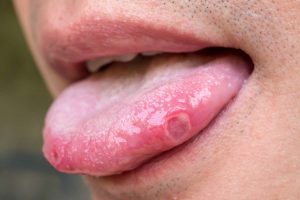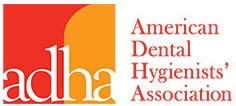Helping Thousands of People Each Year Find Dental Services
- Emergency dental surgery, cavities, general dental care.
- Find immediate help, no insurance required.
- Get relief from chipped, cracked or lost teeth, abscesses or toothaches.
What Is Thrush and How Do You Treat It?

Oral thrush, also known as oral candidiasis or simply as thrush, is a yeast infection that affects the mouth. Although it can lead to several unpleasant symptoms, the good news is that thrush is easily treatable and will rarely lead to long-term damage.
What Causes Thrush?
Oral thrush is most often caused by Candida albicans, a fungus that lives in the mouth. In healthy people, a small amount of this fungus thrives without causing harm, but an infection develops when this fungus begins to grow uncontrollably.
For most people, our immune system is naturally able to control the number of microorganisms in our mouth. Thrush often develops when the immune system is weakened by certain medications, as well as health conditions such as diabetes, HIV, and anemia.
Antibiotics, as well as many common cancer treatments, such as chemotherapy and radiation therapy, can also increase susceptibility to thrush. Most infants develop thrush after birth but, in rare cases, it is contracted during childbirth. Pregnant women with vaginal yeast infections may transmit the infection while giving birth, as the same fungus causes oral thrush.
Other factors that can increase your likelihood of thrush include wearing dentures, smoking cigarettes, and having recently undergone an organ transplant. Babies and toddlers are at the highest risk of developing thrush, making it important for parents to look for symptoms in their children and promote healthy hygiene practices.
What Are the Symptoms of Thrush?
The most distinctive sign of thrush is the appearance of creamy, bumpy white lesions on the roof of your mouth, or on your tongue, inner cheeks, tonsils, or gums. These bumps are slightly raised on the skin and may bleed if they are scraped or rubbed. Many describe the lesions as resembling cottage cheese and accompanied by a dry or “cottony” feeling in the mouth.
More severe symptoms may include difficulty swallowing, cracking in the corners of the mouth and burning or soreness that can make eating difficult and painful. While some people with thrush experience a bad taste in the mouth, others experience a loss of taste altogether.
In very severe cases, those with particularly weakened immune systems may experience lesions in the esophagus as well. Infants with thrush may also experience severe symptoms, including heightened irritability and difficulty feeding.
In patients with an extremely weakened immune system, the fungal infection may enter the bloodstream spread into other parts of the body if left untreated. However, with proper treatment, thrush will rarely lead to long-term health complications.
Can Thrush Be Prevented?

Your chances of developing thrush can also be lowered by making a few lifestyle changes. Quitting smoking can lower your risk of thrush, as well as limiting foods that are high in sugar—as sugar can increase the growth of Candida albicans and similar fungi.
Just as pregnant women may transmit an infection to their baby, a breastfeeding infant could pass thrush on to their mother. Women who notice their nipples are unusually cracked, red, flaky or painful may have a yeast infection affecting her breasts. This can begin a pattern in which the infection is continuously transmitted between mother and child.
It is recommended that mothers who are breastfeeding infants with thrush use nursing pads. Nursing pads can prevent the fungus from clinging to clothing, which could transmit the infection from child to mother, or re-infect an infant who has previously had oral thrush. Washing pacifiers, bottle nipples and breast pumps in hot water can also prevent infection.
Diagnosing and Treating Thrush
If you experience the symptoms of thrush, you can visit your family doctor for a diagnosis. Your doctor may be able to diagnose the condition simply by inspecting your mouth. In some cases, your doctor may take a biopsy by scraping off part of a lesion and testing it for the Candida fungus.
In cases where the infection has spread to the esophagus, an endoscopy or throat swab culture may be required to ensure an accurate diagnosis.
Once diagnosed, thrush can be treated by a variety of home remedies and medical treatments. Your doctor will recommend a treatment based on your age and overall health, as well as the severity of the infection.
Rinsing your mouth with a saltwater mixture is a common home remedy. You can easily prepare a salt water rinse by mixing a half teaspoon of salt with eight ounces of water. Adding yogurt to your diet can also help restore healthy levels of bacteria and is especially effective to prevent thrush while taking antibiotics.
Antifungal Treatments
Thrush can also be treated with antifungal medications. While some antifungal treatments are available as an over-the-counter medication, your doctor may instead advise you to use a prescription medication. It is important to take your medication for as long as your doctor recommends, even if symptoms subside quickly.
Fluconazole is a common medicinal treatment for thrush that is often taken in tablet form. Two other common antifungal medications include Clotrimazole, which is taken as a lozenge, and Nystatin, which is taken as a mouthwash. In infants, Nystatin will be swabbed into the mouth by a parent or doctor.
All three medications work by blocking Candida from reproducing. Patients who have HIV or experience resistance to the above medications may be prescribed another antifungal called Itraconazole. A drug called Amphotericin B is used only in very severe cases.
Antifungal medications are often very safe and effective treatments. However, side effects may include mouth irritation and, in more extreme cases, nausea, diarrhea, and vomiting.
With most treatments, thrush will disappear within a couple weeks. However, it is important to practice good hygiene and make the necessary lifestyle changes to prevent thrush from reappearing in the future.
Medically Fact-Checked & Written by Our Dental Editorial Team
You can read more about our editorial guidelines by clicking this link and learn more about the Emergency Dentists USA editorial team here.





